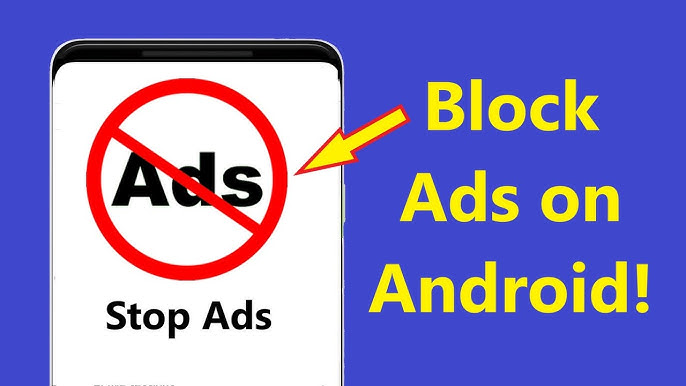Get Solution For Mobile Ads Problem In just 1 min

Title: Addressing the Mobile Ads Problem: Solutions for a Better User Experience
Mobile advertising has become a cornerstone of the digital marketing ecosystem. With the increasing reliance on mobile devices for browsing, shopping, and socializing, advertisers are eager to reach their audiences where they are most engaged. However, the rise of mobile advertising has also given birth to a series of challenges. While advertisers benefit from mobile ads, users often find them intrusive, annoying, and disruptive. This article explores the key problems associated with mobile ads and offers solutions for improving the overall experience for both advertisers and users.
1. The Mobile Ads Problem: Key Challenges
1.1 Intrusiveness and Disruption
One of the most significant complaints about mobile ads is that they disrupt the user experience. Pop-up ads, interstitials, and video ads that play automatically can make it difficult for users to engage with their content. This type of ad placement often forces users to pause what they’re doing and interact with the ad to either close it or skip it.
These intrusive ads not only create a poor experience for users but can also reduce the time they spend interacting with the app or website. This disruption can lead to higher bounce rates, decreased user engagement, and even app uninstalls.
1.2 Ad Fatigue and Banner Blindness
As users are exposed to a constant stream of mobile ads, they can experience ad fatigue. This occurs when individuals become desensitized to advertisements due to overexposure. Ad fatigue leads to a phenomenon called “banner blindness,” where users automatically ignore ads, even if they are placed in prominent areas of the screen.
This decline in ad engagement means that advertisers’ efforts to grab attention may go unnoticed, ultimately rendering the mobile ad campaigns ineffective.
1.3 Privacy Concerns
Mobile ads are heavily reliant on user data. Advertisers often use personal information such as location, browsing history, and app usage to serve highly targeted ads. However, this level of data collection raises significant privacy concerns. Users are becoming more aware of how their personal information is being used and may be uncomfortable with the extent to which their data is collected and shared without explicit consent.
Ad-blocking tools and privacy-conscious app features, such as Apple’s App Tracking Transparency (ATT), are becoming more common as a response to these concerns. As users opt out of tracking and limit data sharing, advertisers are facing difficulties in serving personalized ads.
1.4 Mobile Ad Load Times and Performance
Another significant issue with mobile ads is the impact they have on the performance of mobile devices. Ads that require heavy resources to load—such as large video files or high-resolution images—can slow down app load times and reduce overall performance. This creates a frustrating user experience, particularly in apps or websites where performance is crucial.
Slower loading times can result in users abandoning the app or website before fully engaging with it, leading to lost opportunities for advertisers.
2. Proposed Solutions for the Mobile Ads Problem
To address these problems, both advertisers and developers need to work together to improve mobile ads. Here are several strategies that can be implemented to solve the issues associated with mobile ads:
2.1 Implementing Non-Intrusive Ad Formats
One of the most effective ways to address the problem of intrusive ads is to focus on less disruptive ad formats. Native ads, for example, are integrated seamlessly into the content and design of the app or website, making them less obtrusive. These ads match the look and feel of the surrounding content, which helps users engage with the advertisement without feeling like their experience has been interrupted.
Additionally, ads that allow users to close or skip after a brief duration (such as after 5 seconds) rather than forcing users to watch the entire video or interact with the ad can improve the user experience. By giving users more control over how and when they engage with ads, advertisers can maintain their reach while respecting the user’s time and attention.
2.2 Personalization and Relevance
To combat ad fatigue and banner blindness, advertisers must focus on delivering personalized and relevant ads to users. Targeted advertising is more effective when it speaks to a user’s specific interests or needs. Utilizing machine learning algorithms and data analysis, advertisers can better understand their audience and deliver ads that are more likely to resonate with them.
However, the key to this solution is ensuring that the targeting is respectful of user privacy. Users should be given control over their data and be provided with the option to opt-out of personalized ads if they choose. Transparency in data collection and advertising practices is critical for building trust with users.
2.3 Reducing Ad Load Times
To improve performance, developers should prioritize optimizing the size and format of mobile ads. Using lightweight file types such as compressed images and HTML5 ads can reduce loading times and improve app performance. Additionally, lazy loading techniques can be employed to ensure that ads load only when they are needed, minimizing the initial impact on app load times.
Another important consideration is ensuring that ads do not compete for bandwidth with critical content. Ads should be designed to load efficiently without affecting the overall performance of the app or website. Advertisers should also be mindful of mobile data usage, as heavy ad content can quickly eat up users’ data plans, leading to frustration.
2.4 Enhancing Transparency and Privacy Controls
As privacy concerns continue to grow, advertisers need to be more transparent about how they collect and use user data. Clear communication about data usage, as well as providing users with easy-to-understand privacy settings, can help alleviate concerns. Features such as Apple’s App Tracking Transparency (ATT) have raised awareness about user privacy, and advertisers must adapt by offering more privacy-conscious advertising practices.
Giving users control over their data is essential. Users should have the option to opt-out of personalized ads and limit the amount of information shared with advertisers. This can be achieved through privacy settings in both apps and operating systems. When users feel their data is being handled responsibly, they are more likely to engage with ads in a positive way.
2.5 Utilizing Ad-Free Experiences with Subscription Models
Some users are willing to pay a premium for ad-free experiences. For developers, offering ad-free options through subscription models can provide an alternative revenue stream. This allows users who prefer not to see ads to enjoy uninterrupted content, while those who are okay with ads can continue to use the free version.
Subscription models can also offer enhanced features or additional content in exchange for removing ads. This approach benefits both users and advertisers by giving users more control over their experience while still providing advertisers with a way to monetize their products.
3. Conclusion
Mobile advertising is an essential component of the modern digital landscape, but its current state needs improvement. By addressing the key challenges—such as intrusiveness, ad fatigue, privacy concerns, and performance issues—advertisers can create a more engaging and user-friendly experience. Non-intrusive ad formats, personalized targeting, optimized ad performance, enhanced privacy controls, and subscription-based ad-free experiences are just a few of the solutions that can help improve the mobile ad ecosystem.
Ultimately, the key to solving the mobile ads problem lies in balancing the needs of advertisers with the desires of users. By prioritizing user experience, respect for privacy, and performance, mobile advertising can continue to thrive while ensuring that users remain satisfied and engaged.
Code Is : dns.adguard.com



